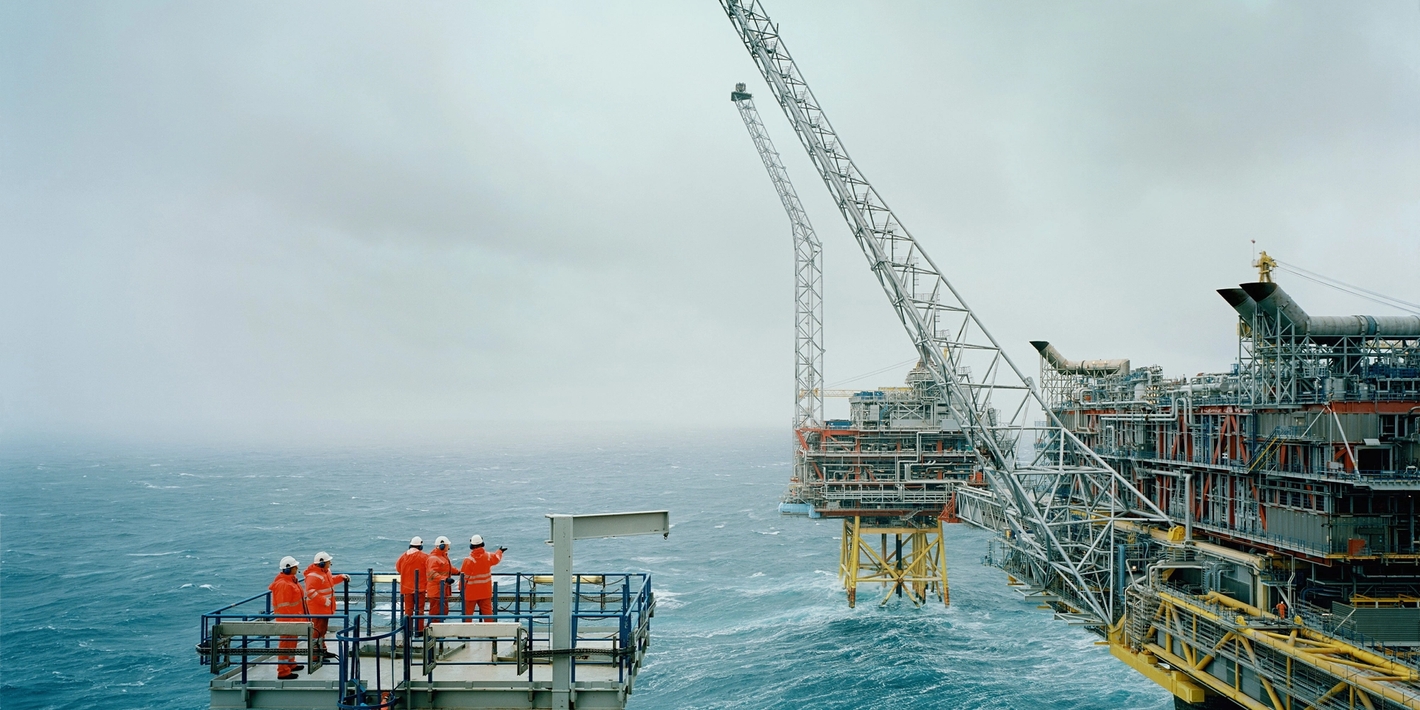The Oseberg Field Centre encompasses three platforms; Oseberg A, B and D, all of which are connected by bridges in the southern part of the Oseberg field. It also includes the unmanned Oseberg H platform, which is located 8 kilometres northwest of the field centre.
Oseberg A is a concrete platform with process equipment and living quarters, while Oseberg B has a steel jacket and drilling, production and injection equipment.
Oseberg D is a steel platform with gas processing and export equipment. It was connected to the field centre with a bridge in the spring of 1999.
Oseberg H is a modern, cost-effective wellhead platform with a steel jacket. Oil and gas are transported in a multi-phase pipeline from Oseberg H to the Oseberg Field Centre.
Six subsea installations with a total of 21 wells are tied in to the Oseberg Field Centre.
Gas export from the Oseberg Field Centre started on 1 October 2000, ushering in a new era for the Oseberg field.
Transport
Production from the Tune field (gas and condensate) goes to the Oseberg Field Centre. Condensate is sent to the Sture terminal onshore, while the gas is injected in the Oseberg field.
The facility at the field centre is also used to treat oil and gas from the satellite fields Oseberg East and Oseberg South.
Oil from the Oseberg area is routed via the Oseberg Transport System (OTS) to the Sture terminal.
Oil from the Oseberg C, Oseberg South, Oseberg East and Brage installations is also pumped through the same transport system.
The gas is sent to the market via Oseberg Gas Transport (OGT) to the Heimdal Gas Centre, and from there into the Statpipe system bound for the Continent and through Vesterled to the United Kingdom.
Location: Blocks 30/6 and 30/9, around 130 km northwest of Bergen
Start-up: 1 December 1988
Production: Oil and gas
Oseberg South
The Oseberg South platform in the North Sea came on stream in the winter of 2000.
The development concept for the Oseberg South field, which consists of several structures south of the Oseberg field, includes an integrated drilling, accommodation and production platform with a steel jacket.
The J, K and Stjerne subsea installations are tied into the Oseberg South platform. There is capacity for a total of 14 wells on these subsea installations, while 32 wells are planned on the Oseberg South platform.
Transport
The oil is routed via the Oseberg Field Centre and the Oseberg Transport System to the Sture terminal.
Location: Block 30/9, 13 kilometres south of the Oseberg Field Centre
Start-up: 5 February 2000
Production: Oil and gas
Oseberg C
Oseberg C is situated 13 km north of the Oseberg Field Centre. It is an integrated accommodation, processing and drilling platform that sits atop a steel jacket. Oil is produced from 18 wells. Oil and gas from certain wells are routed in a multi-phase pipeline to the Oseberg Field Centre for processing. For the remaining wells, gas is injected in the Oseberg main field and is produced via the Oseberg Field Centre.
The oil runs through a three-stage separation process with pressure support in the reservoir from three compressors. Stabilised crude is sent to the Sture terminal via the field centre.
Transport
The oil is sent to the Sture terminal via the field centre.
Location: 10 km north of the Oseberg Field Centre
Start-up: December 1991
Oseberg East
The smallest of the platforms in the Oseberg area, Oseberg East, is situated 25 kilometres northeast of the Oseberg Field Centre.
The development concept utilises an integrated drilling, accommodation and production platform with equipment for first-stage processing.
The oil undergoes second and third-stage processing on the Oseberg Field Centre before it is transported by pipeline to the Sture terminal.
Water and gas are injected into the reservoir to improve oil recovery.
Transport
The oil is routed in a pipeline via the Oseberg Transport System (OTS) to the Sture terminal.
Location: 25 kilometres northeast of the Oseberg Field Centre
Start-up: 3 May 1999
